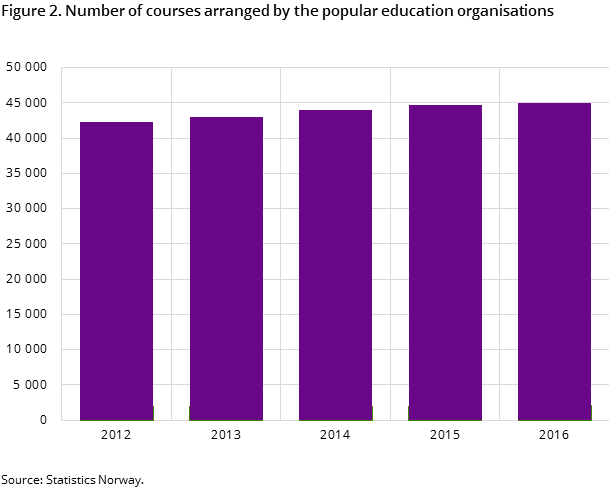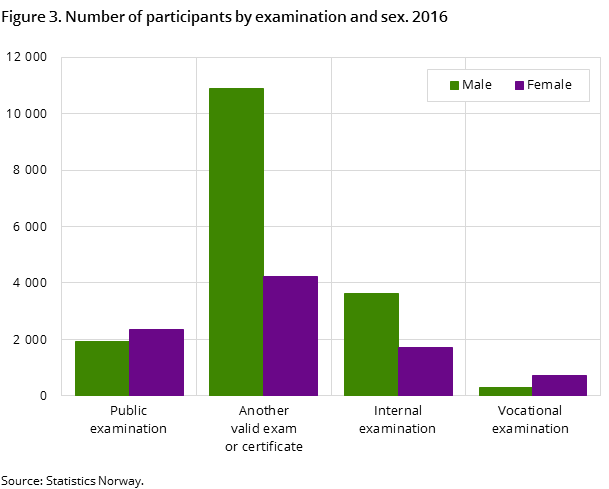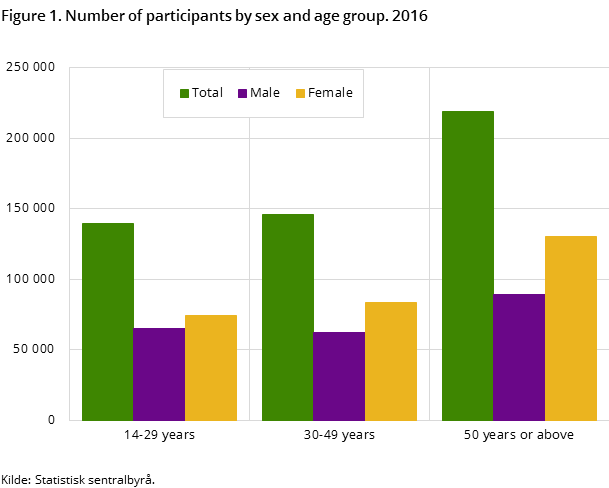Half a million participants
Published:
In 2016, there were 505 000 participants on 45 000 subsidised courses arranged by popular education organisations. These courses accounted for a total of 1.4 million lessons.
- Full set of figures
- Activities of adult learning associations
- Series archive
- Activities of adult learning associations (archive)
The popular education organisations also arranged 400 other courses, but these had 3 000 fewer participants in 2016 compared with the previous year. Most courses were organised by the Folkeuniversitetet - Adult Education Association; 8 300 courses with 108 000 participants. The Association for Adapted Adult Education in Norway (Funkis) had the second most courses and participants; 7 000 courses with 54 700 participants. These two organisations along with the Christian Association for Adult Education in Norway (K-Stud) accounted for a total of 40 per cent of all participants and 46 per cent of all courses organised in 2016.
25 800 could sit an examination
In total, 25 800 participants, or 5 per cent of all participants, were given the opportunity to sit a final examination or internal tests. Of those who were eligible to sit an examination, 4 300 could take a public examination, 15 100 could take another valid exam or certificate and 1 000 could take a vocational examination. In addition, 5 400 were given the opportunity to take an internal test.
50 years+ group in the majority
Forty-three per cent of all participants were in the age group 50 years and above. Twenty-eight per cent were in the age group 14-29 years and 29 per cent were in the age group 30-49 years. Funkis and the Norwegian Choir Association (KOR) had the highest number of participants aged 50 years and above, with 81 and 72 per cent respectively.
As in previous years, female participants were in the majority. Women accounted for 57 per cent of all participants in 2016 and were in the majority in all counties. While women in the age group 50 years and above accounted for 45 per cent of all female participants, the corresponding figure for men was 41 per cent.
Contact
-
Hossein Moafi
-
Statistics Norway's Information Centre



